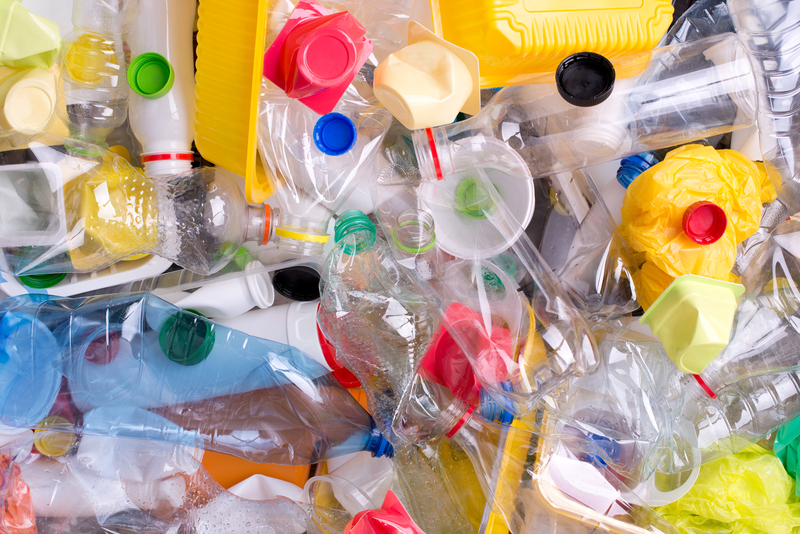Smart Disposal Options for Pots and Pans in Your Area
Do you have old or unused pots and pans cluttering up your kitchen cabinets? When it's time to part ways with these kitchen essentials, it's important to explore environmentally-friendly, ethical and convenient options. In this comprehensive guide, you'll learn about smart ways to dispose of pots and pans in your area, ranging from recycling to donations and creative upcycling projects. Discover how easy--and even rewarding--responsible disposal can be!
Why Smart Disposal of Pots and Pans Matters
Many households struggle with the question: What should I do with old cookware? Simply throwing pans and pots into the garbage not only fills landfills but also wastes valuable materials that could have a second life. Taking the time to explore smart cookware disposal solutions minimizes waste, supports your local community, and even helps the environment.
- Reduces Landfill Waste: Diverting kitchenware from landfills dramatically decreases the volume of waste generated by households.
- Conserves Resources: Recycling metal items like pots and pans saves raw materials and energy used in manufacturing new products.
- Supports Charitable Causes: Donating usable cookware can help individuals and families in need within your area.

Identifying the Material of Your Pots and Pans
Before choosing a disposal option for cookware, it's essential to know what type of material your items are made from. Most pots and pans fall into the following categories:
- Aluminum
- Stainless Steel
- Copper
- Cast Iron
- Non-stick (Teflon or Ceramic Coated)
Recycling facilities and donation centers often have specific requirements for accepting certain types of metals or coated cookware, so accurate identification is the first step toward smart disposal.
Best Smart Disposal Options for Old Pots and Pans
1. Recycling Cookware Responsibly
Recycling is a top smart disposal option for metal pots and pans that are too damaged or worn for further use. Here's how to go about it:
- Scrap Yards: Most scrap metal facilities in your area accept aluminum, steel, and copper pots and pans--even if they're rusty or damaged.
- Municipal Recycling Centers: Some household recycling programs permit certain types of cookware. Be sure to check with your local waste management authority for guidelines.
- Retailer Take-Back Programs: Large retailers sometimes offer trade-in or recycling events for kitchenware. Research if stores near you participate in such initiatives.
Tips for Recycling:
- Remove any plastic parts or handles if possible.
- Ensure the item is cleaned of food residue.
- Check for recycling symbols or consult your local recycler about compatibility.
2. Donating Gently Used Pots and Pans
If your cookware is still in decent shape, donation is a highly sustainable and community-focused choice. Giving pots and pans a second life helps local families, shelters, or schools:
- Nonprofit Thrift Stores: Organizations like Goodwill, Salvation Army, and local thrift shops welcome kitchenware donations.
- Homeless Shelters and Soup Kitchens: Community centers and nonprofits often need reliable cookware for meal preparation.
- College Students and New Households: Consider offering items through social media groups or neighborhood apps like Nextdoor.
Pro tip: Make sure the cookware is clean and functional. Check with each organization for their policies on accepting non-stick or coated cookware.
3. Upcycling: Creative Ways to Repurpose Old Cookware
Upcycling offers a fun and environmentally responsible way to give new life to old pots and pans. Here are some imaginative smart disposal alternatives:
- Planters: Turn deep pots or pans into charming herb or flower planters for your balcony or garden.
- Wall Art: Antique pans--especially copper or cast iron--make unique rustic wall decor.
- Organizers: Use skillets as creative trays for keys or jewelry, or mount lids as message boards or clocks.
- Children's Toys: Create musical instruments or pretend-play cookware for kids, ensuring edges are not sharp.
With a little imagination, your tired cookware can become a conversation piece!
4. Manufacturer or Retailer Take-Backs
Some manufacturers or kitchenware brands operate take-back programs, collecting used pots and pans for responsible recycling. Explore whether your cookware brand participates in these initiatives:
- Check Their Website: Popular brands often list sustainability initiatives or recycling partnerships on their customer service pages.
- Retailer Partnerships: Retailers like IKEA, Target, or Williams Sonoma occasionally offer trade-in or recycling events for used kitchenware. Sign up for their newsletters to stay informed.
Always ask about smart disposal options for kitchenware at the store where you bought it, or when replacing old pots and pans.
Important Considerations for Non-Stick and Specialty Cookware
Disposing of non-stick pots and pans (such as Teflon or ceramic-coated items) can be trickier due to the chemicals involved. Here's how you can dispose of them smartly:
- Non-stick Coatings: Many recyclers don't accept Teflon pans because the coating cannot be melted down with the metal. Look for specialized recycling drop-offs for this material.
- Ceramic or Enamel-coated Cookware: Often can't be processed with standard scrap metal; check with local recycling guidelines or donate if possible.
- Damaged or Chipped Ware: If the pan is badly damaged, upcycling or professional recycling is typically the safest path.
Always prioritize safety: Avoid donating or reusing cookware that has flaking or peeling coatings, as these can pose health hazards.
How to Find Smart Disposal or Recycling Centers Near You
Locating the best local recycling or donation centers for cookware is easier than ever. Use these tools and resources to make the process smooth:
- Earth911 Recycling Locator: Enter your ZIP code and the material type (pots and pans, metal cookware, etc.) to find convenient drop-off locations.
- City or County Waste Management Websites: Local government sites often provide interactive maps and disposal event calendars.
- Local Nonprofit Directories: Use online platforms or call local organizations directly to find out their current donation needs.
- Retailer Finder Tools: Some large chains have store locators that show upcoming recycling events.
- Community Apps and Social Boards: Platforms like Facebook Marketplace, Freecycle, Craigslist, and Nextdoor are perfect for rehoming usable cookware.
Frequently Asked Questions about Smart Pots and Pans Disposal
Can I Put Old Pots and Pans in My Recycling Bin?
It depends on your local recycling program. Many curbside programs do not accept larger metal items, especially if they have plastic, rubber, or non-stick coatings. Always check local guidelines first, or take them to a scrap metal center.
Is it Safe to Donate Non-Stick Cookware?
If the non-stick coating is intact and the pan is in good condition, it can be donated. However, cookware with flaking or peeling surfaces should be recycled or safely disposed of to avoid health issues.
What if My Cookware is Damaged or Rusted?
Damaged or heavily rusted cookware is best suited for recycling or upcycling, rather than donation. Some metal recyclers can accept rusty pots and pans, especially if they're made entirely of metal.
Can I Throw Away Pots and Pans in the Trash?
It's not recommended as the first option. Smart disposal practices should always be tried first to minimize environmental impact.
How Do I Prepare Pots and Pans for Disposal?
- Clean thoroughly.
- Remove any plastics, rubber or wooden handles.
- Group by material if planning to recycle.
- Package carefully for donation (no sharp edges exposed).
Future-Focused Tips: How to Choose Cookware for Easier Disposal
To make future disposal even smarter, consider the following when purchasing new pots and pans:
- Opt for All-Metal Construction: Items without coatings or composite materials are easier to recycle.
- Choose High-Quality Brands: Durable cookware lasts longer, reducing waste and the need for frequent replacement.
- Research Manufacturer Take-Back Policies: Many modern kitchenware brands now offer recycling or upcycling programs for their products.
- Avoid Excessive Non-Stick Coatings: Seek pans with natural, non-toxic non-stick surfaces if possible.

The Big Picture: Environmental Benefits of Smart Cookware Disposal
Why go the extra mile to responsibly dispose of old pots and pans in your area? Here are just a few benefits of smart cookware disposal:
- Reduces resource extraction by recycling valuable metals.
- Lowers your household's landfill contributions.
- Helps local charities and reduces consumption by promoting reuse.
- Encourages community engagement through donation and sharing.
- Educates others on sustainable habits--be a leader in your circle!
Conclusion: Make Smart Choices for a Sustainable Kitchen
Getting rid of old pots and pans doesn't have to harm the planet or fill up our landfills. By recycling, donating, upcycling, or participating in manufacturer take-back programs, you can discover smart disposal options for pots and pans in your area that benefit your home, your community, and the environment.
Ready to make a difference? Take stock of your old kitchenware today, and choose the disposal method that aligns best with your values and local resources. Share your smart disposal journey with friends and family, and together, you'll help create a more sustainable world--one kitchen at a time!
